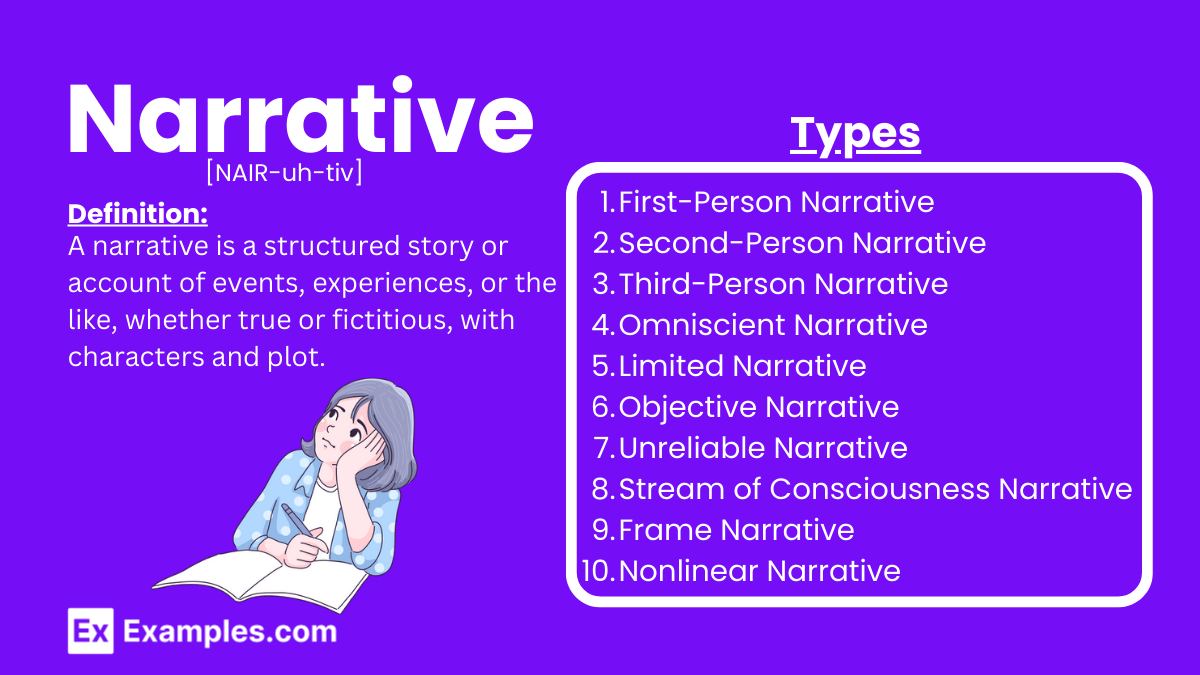50+ Narrative Examples
In the realm of literature, storytelling reigns supreme. Whether we’re engrossed in the pages of a captivating novel or sitting on the edge of our seats while watching a suspenseful movie, narratives have an unparalleled ability to transport us to different worlds and ignite our imagination. But did you know that narratives extend far beyond works of fiction? From academic reports to annual summaries, narratives are employed across a wide range of mediums to convey information, evoke emotions, and leave a lasting impact. In this article, we embark on a journey through the fascinating world of narrative format, unraveling its intricacies and uncovering its applications in diverse context. So, strap in and prepare to explore the art of storytelling in a whole new light.
What is a Narrative?
A narrative is a structured story that describes a sequence of events, experiences, or actions. It includes characters, a plot, setting, conflict, and a resolution. Narratives can be fictional or non-fictional and are often used to engage and entertain readers, as well as to convey deeper meanings or themes.
Narrative Examples in Literature
Narratives are essential elements in literature, and they come in various forms, from short stories to epic novels. Here are some notable examples of narratives in literature, showcasing different styles, theme, and storytelling techniques.
1. “To Kill a Mockingbird” by Harper Lee
Summary:
Set in the American South during the 1930s, this novel follows young Scout Finch, her brother Jem, and their father, Atticus Finch, a lawyer defending a black man wrongfully accused of raping a white woman. Through Scout’s perspective, the narrative explores themes of racial injustice, moral growth, and empathy.
Narrative Style:
First-person narrative from Scout’s point of view, blending innocence and mature reflections.
2. “1984” by George Orwell
Summary:
In a dystopian future, Winston Smith lives under the oppressive regime of the Party, led by Big Brother. The narrative follows Winston’s rebellion against totalitarian control, exploring themes of surveillance, freedom, and truth.
Narrative Style:
Third-person limited narrative focusing on Winston’s thoughts and experiences, creating an intense and claustrophobic atmosphere.
3. “The Great Gatsby” by F. Scott Fitzgerald
Summary:
Narrated by Nick Carraway, the novel tells the story of Jay Gatsby’s unrequited love for Daisy Buchanan and the moral decay of American society in the 1920s. Themes include the American Dream, love, and social stratification.
Narrative Style:
First-person narrative from Nick’s perspective, providing insights into Gatsby’s character and the era’s glamour and disillusionment.
4. “Moby-Dick” by Herman Melville
Summary:
The narrative follows Ishmael’s adventures on the whaling ship Pequod, commanded by the obsessed Captain Ahab, who is determined to hunt the white whale, Moby-Dick. Themes of obsession, revenge, and humanity’s struggle against nature are explored.
Narrative Style:
First-person narrative from Ishmael’s perspective, combined with detailed expository chapters on whaling.
5. “Pride and Prejudice” by Jane Austen
Summary:
This classic novel centers on Elizabeth Bennet and her evolving relationship with the wealthy and aloof Mr. Darcy. Themes include social class, marriage, and morality.
Narrative Style:
Third-person omniscient narrative, providing insights into multiple characters’ thoughts and motivations.
6. “The Catcher in the Rye” by J.D. Salinger
Summary:
The novel follows teenage Holden Caulfield’s experiences in New York City after being expelled from his prep school. Themes of alienation, innocence, and identity are central to the narrative.
Narrative Style:
First-person narrative from Holden’s perspective, characterized by his distinctive voice and stream-of-consciousness style.
7. “Beloved” by Toni Morrison
Summary:
Set after the American Civil War, the novel tells the story of Sethe, an escaped slave haunted by the ghost of her dead daughter, Beloved. Themes include memory, trauma, and the legacy of slavery.
Narrative Style:
Third-person omniscient narrative, interweaving multiple characters’ perspectives and flashbacks to past events.
8. “The Odyssey” by Homer
Summary:
This ancient Greek epic poem follows Odysseus’s ten-year journey home after the Trojan War, encountering various trials and adventures. Themes include heroism, loyalty, and the human struggle against fate.
Narrative Style:
Third-person narrative with a mix of direct speech and poetic description, employing various storytelling techniques such as in medias res (starting in the middle of the story).
9. “One Hundred Years of Solitude” by Gabriel García Márquez
Summary:
The novel chronicles the multi-generational story of the Buendía family in the fictional town of Macondo. Themes include history, reality, and the cyclical nature of time.
Narrative Style:
Third-person omniscient narrative with elements of magical realism, blending fantastical events with everyday life.
10. “Frankenstein” by Mary Shelley
Summary:
The narrative follows Victor Frankenstein, a scientist who creates a sentient creature through an unorthodox experiment. The novel explores themes of ambition, creation, and responsibility.
Narrative Style:
Frame narrative, with multiple first-person perspectives, including Victor Frankenstein’s, the creature’s, and Captain Walton’s letters.
Narrative Example Sentences
Narrative sentences help tell a story by setting scenes, describing actions, and revealing characters’ thoughts and feelings. Here are some examples to illustrate various aspects of narrative writing.
1. Setting the Scene
The sun dipped below the horizon, casting a golden glow over the sprawling fields.
2. Introducing Characters
Maria, with her fiery red hair and quick wit, was always the center of attention at any gathering.
3. Describing Actions
He sprinted across the field, his heart pounding and breath coming in short gasps.
4. Revealing Thoughts and Feelings
Despite the chaos around her, Emma felt a strange sense of calm wash over her.
5. Creating Suspense
The floorboards creaked under his weight, each step echoing through the silent house.
6. Building Tension
His grip tightened on the steering wheel as the car skidded on the icy road.
7. Reaching a Climax
In a moment of sheer determination, she leaped across the gap, her fingers just grazing the edge of the cliff.
8. Resolving the Conflict
With a sigh of relief, they watched the sunrise, signaling the end of their long ordeal.
9. Ending with a Reflection
Looking back, he realized that every challenge had shaped him into the person he was today.
10. Dialogue
“Are you sure we should go in there?” whispered Tom, his eyes wide with fear as they approached the abandoned house.
Narrative Examples for Students
Narrative writing helps students express their thoughts, experiences, and imagination. Here are few simple yet engaging narrative examples suitable for students, illustrating various aspects of storytelling.
1. A Day at the Zoo
Introduction: Last Saturday, my family and I went to the zoo. I had been looking forward to this trip for weeks, excited to see all the animals.
Rising Action: As soon as we entered, we headed straight to the lion exhibit. The lions were lounging lazily in the sun. Next, we visited the monkey enclosure, where the monkeys swung playfully from branch to branch. My favorite part was the aquarium, where colorful fish swam gracefully.
Climax: Suddenly, a loud noise startled us. One of the zookeepers announced that a baby elephant had been born! We rushed to the elephant enclosure and saw the tiny elephant calf standing shakily next to its mother.
Falling Action: We watched in awe as the baby elephant took its first steps. The zookeepers explained how they care for the newborns and answered all our questions.
Resolution: As we left the zoo, I felt grateful for the amazing day. Seeing the baby elephant was a once-in-a-lifetime experience that I would never forget.
2. The Lost Wallet
Introduction: On my way home from school, I found a wallet lying on the sidewalk. I picked it up and looked inside for any identification.
Rising Action: The wallet contained some cash, credit cards, and a student ID with the name Alex Johnson. I decided to try and find Alex to return the wallet. I asked a few people in the neighborhood if they knew him, but no one did.
Climax: Just as I was about to give up, I saw a flyer on a lamppost with a picture of the wallet and a phone number. It was a lost and found notice from Alex! I quickly called the number and arranged to meet at a nearby café.
Falling Action: Alex arrived at the café and was overjoyed to see his wallet. He thanked me repeatedly and even offered me a reward, which I politely declined.
Resolution: Walking home, I felt proud of myself for doing the right thing. Returning the wallet to Alex made me realize the importance of honesty and helping others.
3. The Surprise Birthday Party
Introduction: My best friend, Sarah, had been feeling down lately, so I decided to throw her a surprise birthday party. I secretly contacted her friends and planned everything meticulously.
Rising Action: On the day of the party, I invited Sarah over under the guise of a regular hangout. Meanwhile, our friends arrived early to decorate the house and prepare the snacks. We hung streamers, blew up balloons, and set out the cake.
Climax: When Sarah walked through the door, we all jumped out and shouted, “Surprise!” Her face lit up with joy and shock. She couldn’t believe we had done all this for her.
Falling Action: We spent the evening playing games, laughing, and reminiscing about old times. Sarah told me it was the best birthday she had ever had.
Resolution: Seeing Sarah so happy made all the effort worth it. The surprise party not only lifted her spirits but also strengthened our friendship.
4. The School Play Audition
Introduction: I had always been shy, but this year, I decided to audition for the school play. It was a big step out of my comfort zone, and I was both excited and nervous.
Rising Action: I practiced my lines every day, hoping to impress the drama teacher. When the audition day arrived, I watched as other students performed their scenes. My heart raced as my name was called.
Climax: On stage, I took a deep breath and began my monologue. Halfway through, I stumbled over a line, but I quickly recovered and finished strong. The teacher smiled and thanked me for my performance.
Falling Action: A few days later, the cast list was posted. I was thrilled to see my name on it! I had been given a supporting role, and I couldn’t wait to start rehearsals.
Resolution: Participating in the play helped me overcome my shyness and make new friends. It taught me that stepping out of my comfort zone could lead to wonderful experiences.
5. The Camping Trip
Introduction: Last summer, my family and I went on a camping trip to the mountains. It was my first time camping, and I was eager for the adventure.
Rising Action: We set up our tent near a clear, sparkling lake. During the day, we hiked through the forest, discovering hidden waterfalls and spotting wildlife. At night, we sat around the campfire, roasting marshmallows and telling stories.
Climax: On our second night, a sudden storm hit. Strong winds shook the tent, and rain poured down in torrents. We huddled inside, hoping our tent would hold up.
Falling Action: By morning, the storm had passed, and the sun was shining again. We emerged from our tent to find everything soaked, but the air was fresh and clean.
Resolution: Despite the storm, the camping trip was a success. I learned how to adapt to unexpected situations and discovered a love for nature and the great outdoors.
Narrative Paragraph Examples
Narrative paragraphs tell a story or recount an event, engaging the reader through vivid descriptions and personal insights. Here are some examples of narrative paragraphs that illustrate various aspects of storytelling.
1. A Memorable Day at the Park
Last Saturday, my family and I spent the afternoon at Central Park. The weather was perfect, with a gentle breeze and clear blue skies. We spread out our picnic blanket under a large oak tree, unpacked our basket filled with sandwiches, fruits, and cookies, and enjoyed a leisurely meal. After lunch, we played frisbee and took a relaxing boat ride on the lake. As the sun began to set, we watched a group of street performers who amazed us with their acrobatics and fire juggling. It was a day filled with laughter and joy, creating memories that I will cherish forever.
2. First Day of High School
Walking into the bustling hallways of my new high school, I felt a mix of excitement and nervousness. The corridors were filled with students hurrying to their classes, chatting with friends, and looking at their schedules. I clutched my map and timetable, trying to find my way to my first class. When I finally reached the classroom, I took a deep breath and stepped inside, greeted by the friendly smile of my teacher and the curious glances of my new classmates. Despite my initial fears, the day turned out to be an exciting start to a new chapter in my life.
3. The Summer Camp Adventure
During the summer camp, we were taken on a thrilling night hike through the forest. Armed with flashlights and guided by our camp counselor, we ventured into the woods, listening to the sounds of nocturnal animals and the rustling of leaves. At one point, we turned off our flashlights and stood in complete darkness, marveling at the twinkling stars above. The experience was both eerie and magical, making us feel like tiny specks in the vast universe. It was a night I would never forget, filled with wonder and a sense of adventure.
4. The Big Game
The final whistle blew, and the stadium erupted in cheers. Our soccer team had just won the championship, and I could hardly believe it. The match had been intense, with both teams playing their hearts out. I remembered the crucial moment when I scored the winning goal, a perfect strike into the top corner of the net. My teammates lifted me onto their shoulders, and we celebrated our hard-earned victory. It was a moment of triumph and joy, a testament to our hard work and teamwork throughout the season.
5. Learning to Ride a Bike
I still remember the day I learned to ride a bike. My dad had been patiently holding the back of my seat, guiding me as I wobbled down the sidewalk. Suddenly, he let go, and I found myself pedaling on my own. At first, I was terrified, but then I felt a rush of exhilaration as I realized I was riding without any help. The wind whipped through my hair, and I laughed out loud in pure joy. It was a small victory, but it filled me with a newfound sense of confidence and freedom.
6. A Snowy Winter Morning
Waking up to a blanket of snow covering the ground was always magical. That morning, I eagerly put on my winter coat, gloves, and boots, and rushed outside to join my friends. We built snowmen, had snowball fights, and made snow angels, our laughter echoing through the crisp, cold air. Later, we went sledding down the steep hill near my house, the thrill of the speed making our hearts race. As the sun set, we returned home, our cheeks rosy and our spirits high, ready to warm up with hot chocolate by the fireplace.
7. The Surprise Party
When I walked into the living room, I was met with a chorus of “Surprise!” My friends and family had gathered to throw me a surprise birthday party. The room was decorated with colorful balloons and streamers, and a large cake sat on the table. I was overwhelmed with emotion as I realized how much effort everyone had put into making my day special. We spent the evening playing games, dancing, and sharing stories, and I felt incredibly grateful for the love and support of my loved ones. It was a birthday I would always remember.
8. The Camping Trip
Our camping trip to the mountains was an unforgettable experience. We set up our tents near a clear, sparkling lake, surrounded by towering pine trees. During the day, we hiked along scenic trails, discovering hidden waterfalls and spotting wildlife. At night, we gathered around the campfire, roasting marshmallows and telling ghost stories. The sound of the crackling fire and the sight of the star-filled sky created a sense of peace and tranquility. Despite the occasional mosquito bite, the trip was a wonderful escape from the hustle and bustle of everyday life.
9. Winning the Science Fair
After weeks of hard work and preparation, the day of the science fair finally arrived. My project, a model of a volcanic eruption, was set up on a table, ready for the judges. I demonstrated how mixing baking soda and vinegar created an impressive eruption, complete with red food coloring for added effect. When the winners were announced, I was thrilled to hear my name called for first place. The recognition and praise from my teachers and peers made all the effort worthwhile, and I felt a great sense of accomplishment.
10. The Lost Dog
One rainy afternoon, I found a lost dog shivering on my doorstep. It was a small, scruffy terrier with sad eyes. I brought it inside, dried it off, and gave it some food. I checked the collar for any identification but found none. Over the next few days, I put up flyers around the neighborhood and posted online, hoping to find the owner. Just as I was starting to get attached to the little dog, I received a call from a grateful owner who had been searching for their pet. Returning the dog was bittersweet, but it felt good to reunite it with its family.
Narrative Examples in Writing
Narrative writing tells a story by recounting events, experiences, and thoughts in a structured and engaging manner. Here are some examples that illustrate various narrative techniques and elements in writing:
1. Personal Experience Narrative
On my eighth birthday, my parents surprised me with a visit to the local animal shelter. I had always wanted a pet, and that day, my dream came true. We walked through rows of barking dogs and meowing cats until I saw a small, timid puppy in the corner. His big, brown eyes looked up at me, and I knew he was the one. We named him Max, and from that day on, he became my best friend. Max and I spent countless hours playing in the backyard, going on adventures in the woods, and cuddling up during thunderstorms. He taught me responsibility and gave me unconditional love, making my childhood unforgettable.
2. Fictional Narrative
In the heart of the enchanted forest, there was a hidden village that few humans had ever seen. Elara, a young elf with a curious spirit, lived in this village. One day, she discovered an ancient map that hinted at a forgotten treasure buried deep within the forest. Determined to find it, Elara embarked on a journey filled with magical creatures, treacherous paths, and mysterious spells. Along the way, she befriended a talking owl and a mischievous fairy. After many trials and challenges, Elara finally found the treasure—a mystical amulet that granted her the power to protect her village from any harm. Her bravery and kindness became legendary among her people.
3. Historical Narrative
On a chilly morning in December 1773, Samuel Adams stood at the harbor, watching as a crowd gathered. Tensions were high in Boston, and the people were fed up with British taxation. Samuel raised his hand, signaling the start of the protest. Disguised as Mohawk Indians, the crowd boarded three British ships and began to dump chests of tea into the harbor. The water turned dark with the leaves of the East India Company’s finest tea. This act of defiance, later known as the Boston Tea Party, was a pivotal moment in the American Revolution. Samuel Adams’s leadership inspired the colonists to unite against British rule, eventually leading to the fight for independence.
4. Reflective Narrative
As I stood on the graduation stage, clutching my diploma, I couldn’t help but reflect on my journey. Four years ago, I had walked into the university as a nervous freshman, unsure of what the future held. The late-night study sessions, the challenging exams, and the friendships I had made all flashed before my eyes. There were moments of doubt and times when I wanted to give up, but I pushed through. My professors believed in me, my family supported me, and my friends encouraged me. Now, as I looked out at the cheering crowd, I realized that every challenge had shaped me into the person I was today—resilient, determined, and ready for the next chapter.
5. Adventure Narrative
The climb to the summit of Mount Everest was the most grueling experience of my life. The air grew thinner with each step, and the freezing temperatures bit at my exposed skin. My team and I had trained for months, but nothing could prepare us for the reality of the climb. As we reached the final ascent, a storm rolled in, threatening to end our journey. We huddled together, using our body heat to stay warm, and waited for the storm to pass. Finally, the clouds parted, revealing the peak just ahead. With renewed determination, we pushed forward. Standing at the summit, looking out over the world, I felt an overwhelming sense of accomplishment and awe. We had conquered the mountain and achieved the impossible.
6. Mystery Narrative
Detective Sarah Morgan stepped into the dimly lit library, her eyes scanning the room for clues. The millionaire’s mansion was filled with priceless artifacts, but one item was missing—the rare and valuable Blue Diamond. Sarah crouched down, examining a footprint near the shattered display case. As she pieced together the evidence, a pattern emerged. The thief had to be someone familiar with the mansion’s layout and security system. Her investigation led her to the butler, whose suspicious behavior and sudden wealth raised red flags. In a tense confrontation, the butler confessed, revealing the hidden compartment where the Blue Diamond was stashed. Sarah’s keen observation and deductive skills had solved the case once again.
7. Inspirational Narrative
Every morning, Jake Thompson woke up at 5 AM to train for the marathon. He had been paralyzed from the waist down in a car accident five years earlier, and doctors said he would never walk again. But Jake refused to give up. Through intense physical therapy and sheer determination, he learned to walk with the help of crutches. Running a marathon seemed impossible, but Jake set his sights on the goal and worked tirelessly to achieve it. On race day, he lined up with the other runners, his heart pounding with anticipation. As he crossed the finish line hours later, tears streamed down his face. Jake’s journey from paralysis to marathon finisher was a testament to his unwavering spirit and the power of perseverance.
8. Science Fiction Narrative
In the year 2150, Earth had become a technologically advanced utopia, but at a cost. Pollution had rendered much of the planet uninhabitable. Dr. Elena Rodriguez, a brilliant scientist, had dedicated her life to finding a solution. She discovered a way to terraform Mars, making it a new home for humanity. The journey to Mars was long and perilous, but Elena and her team were determined. They faced numerous challenges, from malfunctioning equipment to unexpected storms. Finally, after years of hard work, they succeeded. The barren landscape of Mars transformed into lush, green fields under their watchful eyes. Elena stood on the new frontier, knowing that her work had given humanity a second chance.
9. Fantasy Narrative
In the mystical land of Eldoria, magic flowed through the air like a gentle breeze. Lyra, a young sorceress with untamed powers, lived in a secluded village at the edge of the enchanted forest. One day, a dark shadow fell over Eldoria, and creatures of the night began to terrorize the land. Guided by a prophecy, Lyra embarked on a quest to find the ancient Crystal of Light, said to have the power to banish the darkness. Along her journey, she encountered mythical creatures, solved ancient riddles, and battled formidable foes. With the help of her loyal companions, Lyra finally found the crystal and unleashed its power, restoring peace and harmony to Eldoria.
10. Humorous Narrative
One sunny afternoon, I decided to take my dog, Max, to the park. Max was a large, energetic Labrador who loved to chase anything that moved. As we walked through the park, Max spotted a squirrel and bolted after it, pulling me along. I tripped over my own feet and fell face-first into a muddy puddle. Covered in mud and struggling to get up, I looked around to see if anyone had noticed. To my horror, a group of joggers had stopped to watch, and they burst into laughter. Embarrassed but amused, I couldn’t help but laugh at the situation too. Max, oblivious to the chaos, returned to my side with a satisfied grin, his tail wagging furiously. It was just another day in the life of a dog owner.
Narrative Examples for Poems
Narrative poems tell stories through verse, blending elements of storytelling with the beauty and rhythm of poetry. Here are some examples of narrative poems that illustrate various storytelling techniques and themes.
1. The Tale of the Moonlit Lake
On a quiet night by the moonlit lake,
Two lovers met for an evening’s sake.
Hand in hand, with hearts entwined,
They whispered dreams of a future aligned.
Under the stars, their secrets they shared,
Moments of joy, the burdens they bared.
But fate was cruel on that fateful eve,
A storm approached, and the girl had to leave.
Promising to return, she sailed away,
But the storm grew fierce and led her astray.
The boy waited long by the moonlit shore,
Hoping to see her smile once more.
Years have passed, but the legend remains,
Of the boy by the lake who loves through the pains.
Every night, in the moon’s soft glow,
He waits for the girl he once did know.
2. The Brave Knight’s Quest
A brave knight rode through the darkened wood,
On a quest to prove his worth and good.
His armor gleamed in the pale moon’s light,
As he ventured forth into the night.
He sought a dragon, fierce and bold,
Guarding treasures of untold gold.
Through valleys deep and mountains high,
He followed the dragon’s echoing cry.
At last, he found the beast’s dark lair,
A cavern filled with treasures rare.
With sword in hand, the knight stood tall,
Ready to face the dragon’s thrall.
A mighty battle then ensued,
The knight was brave, the dragon shrewd.
But with a final, daring strike,
The knight prevailed, restoring light.
He took no gold, no treasure fine,
But won the hearts of all mankind.
A hero true, with courage blessed,
The brave knight’s tale forever rests.
3. The Lost Village
In a valley hidden by time’s own hand,
There lies a village of forgotten land.
Once filled with laughter, joy, and song,
Now shadows whisper of what went wrong.
The fields were green, the rivers clear,
The villagers lived without any fear.
But one dark night, a curse was cast,
A spell that made their happiness last.
The morning came, but they did not rise,
Trapped in dreams under darkened skies.
Their spirits roam, in endless plight,
Seeking freedom from the eternal night.
Legends tell of a chosen one,
Who’d break the curse by the rising sun.
But till that day, the village remains,
A ghostly echo of joy and pains.
4. The Weaver’s Daughter
In a small town, by the river’s bend,
Lived a weaver’s daughter, with skill to mend.
Her tapestries told stories grand,
Of distant lands and far-off sands.
Each thread she wove, with care and grace,
Captured beauty in every space.
People came from miles around,
To see her work, so profound.
One day a prince, disguised and fair,
Saw her art and felt a rare,
Connection deep within his heart,
For the weaver’s daughter and her art.
He revealed his truth, his royal claim,
Promising love and eternal fame.
Together they wove their fates entwined,
Creating a legacy left behind.
5. The Enchanted Forest
Deep within the enchanted wood,
A hidden realm of magic stood.
Creatures spoke with voices clear,
And trees whispered for all to hear.
A young girl named Lily, pure and kind,
Ventured into this world to find,
A cure for her village, stricken and weak,
With hope in her heart, the truth she’d seek.
She met a fox with fur of gold,
Who told her tales of ages old.
Through trials tough and riddles hard,
Lily pressed on, never on guard.
At last, she found the ancient tree,
Whose roots held the cure to set them free.
With a tear and a touch, the magic flowed,
Healing her village, their spirits glowed.
Lily returned, a hero brave,
Her courage and love had saved the day.
The enchanted forest, forever a friend,
A tale of hope that will never end.
More Narrative Examples & Samples In PDF
1. Narrative in Linguistic Change

upenn.edu
2. Narrative in Personality Psychology
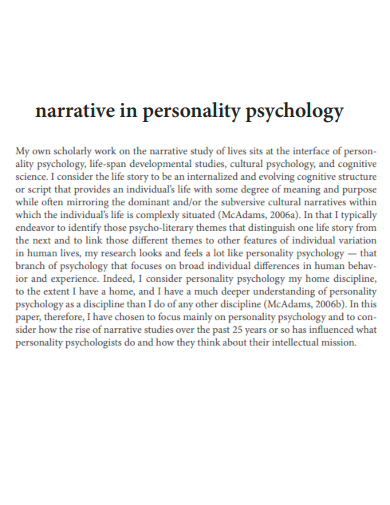
sesp.edu
3. Narrative in Coaching
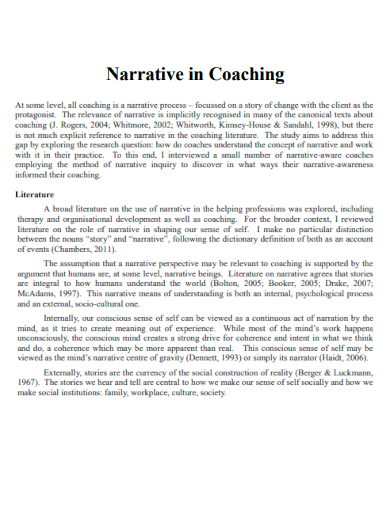
coachingfederation.org
4. Narrative in Contemporary Historical Theory
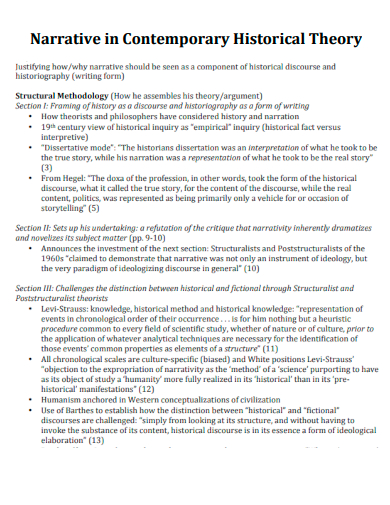
law.buffalo.edu
5. Narrative Structure
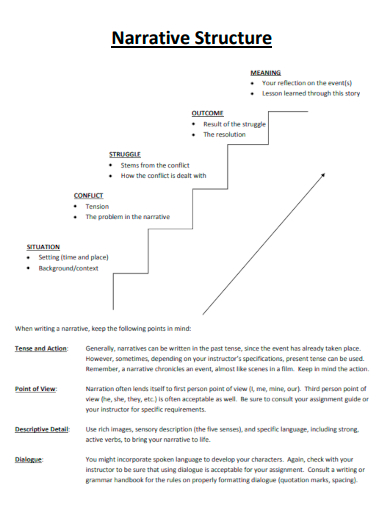
bucks.edu
6. Sample Narrative Format
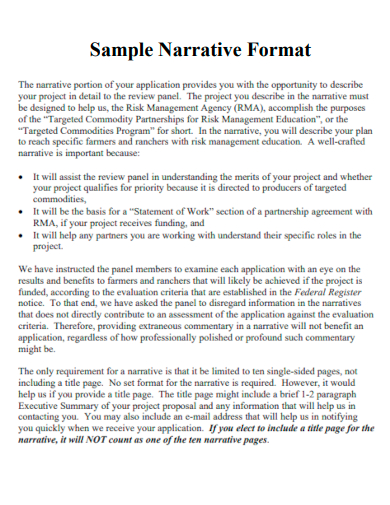
rma.usda.gov
7. Technical Narrative
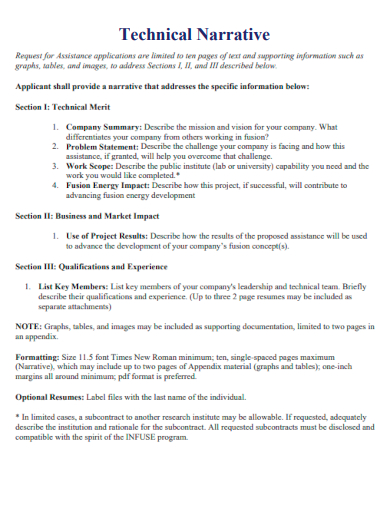
infuse.ornl.gov
8. Expanded Narrative Format
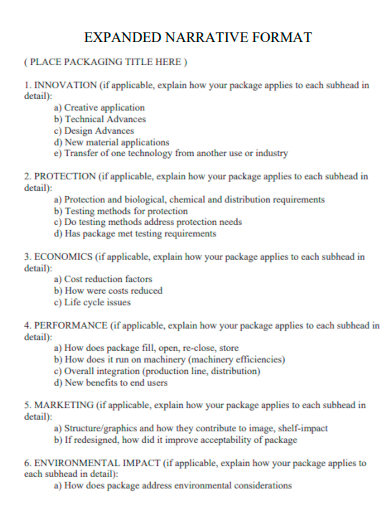
iopp.org
9. Final Narrative Report Format
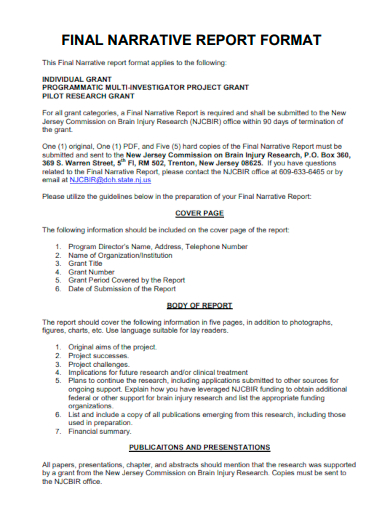
state.nj.us
10. Dialogue Format for Narrative
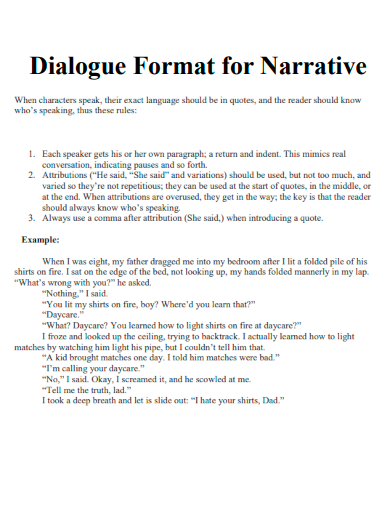
csun.edu
Types of Narrative
Narrative writing comes in various forms, each serving a unique purpose and audience. Understanding the different types of narrative can enhance both reading and writing skills. Below are the primary types of narrative:
1. First-Person Narrative
In a first-person narrative, the story is told from the perspective of a character within the story, often the protagonist. The use of “I” or “we” allows readers to experience the events through the narrator’s personal lens.
Example: “I walked through the dense forest, the crunch of leaves under my feet echoing in the silent night.”
2. Second-Person Narrative
The second-person narrative addresses the reader directly using “you,” making the reader a character in the story. This style is less common but can create an immersive experience.
Example: “You step into the room, and a sense of foreboding washes over you as the door creaks shut behind you.”
3. Third-Person Narrative
In third-person narrative, the story is told by an external narrator who is not a character in the story. This type can be further divided into three subtypes:
a. Third-Person Omniscient
The narrator knows all the thoughts, actions, and feelings of every character. This provides a comprehensive view of the story.
Example: “The children played in the garden, unaware that their parents, watching from the window, were worried about the impending storm.”
b. Third-Person Limited
The narrator only knows the thoughts and feelings of one character, usually the protagonist. This limits the reader’s perspective to that of the chosen character.
Example: “Sara watched the horizon, wondering if she would ever see her brother again. She felt a pang of loneliness that she couldn’t shake off.”
c. Third-Person Objective
The narrator reports only what can be seen and heard, without insight into any character’s thoughts or feelings. This creates a more detached and neutral perspective.
Example: “The judge entered the courtroom, and everyone stood up. The defendant glanced nervously around, shifting from foot to foot.”
4. Epistolary Narrative
An epistolary narrative is told through a series of letters, diary entries, or other documents. This format can offer intimate insights into characters’ thoughts and feelings.
Example: “June 5, 1912 – My Dearest Anne, The war has taken its toll on all of us. Every day, I long to be back home with you. Until then, these letters are my only solace.”
5. Stream of Consciousness
This narrative technique attempts to capture the continuous flow of a character’s thoughts and feelings. It often disregards conventional grammar and structure to mirror the way thoughts occur in the human mind.
Example: “She wondered if he would come, if he remembered, the time they spent by the lake, the warmth of his hand, oh how she missed those days.”
6. Unreliable Narrator
An unreliable narrator’s credibility is compromised, making their account of events suspect. This technique can create mystery and intrigue as readers piece together the truth.
Example: “As I told the police, I had nothing to do with the disappearance. But I remember seeing the red car that night, and I can’t shake the feeling that it means something.”
7. Frame Narrative
A frame narrative is a story within a story, where an introductory or main narrative sets the stage for a more emphasized second narrative. This technique can add depth and context to the main story.
Example: “In the old library, the children found a dusty book. As they began to read, they were transported to a magical land where dragons and wizards ruled.”
8. Linear Narrative
A linear narrative presents events in chronological order, from beginning to end. This straightforward approach is easy to follow and is commonly used in many genres.
Example: “John graduated from college, started his first job, met the love of his life, and eventually started a family.”
9. Non-Linear Narrative
A non-linear narrative presents events out of chronological order. This technique can involve flashbacks, flash-forwards, or a fractured timeline to build suspense or reveal information strategically.
Example: “The scene cut to ten years earlier, when Lily first arrived in the city. It was a stark contrast to the present, where she now stood at the top of her career.”
Importance of using Narrative
Narrative is a powerful tool in both writing and communication. It serves various critical functions, helping to engage readers, convey complex ideas, and foster emotional connections. Below are several key reasons why using narrative is important:
1. Engages the Audience
- Captures attention: Stories intrigue and keep readers engaged.
- Example: “Lily discovers a hidden door leading to a magical realm.”
2. Simplifies Complex Ideas
- Makes concepts accessible: Stories frame abstract information.
- Example: “Jack drops an apple, demonstrating gravity.”
3. Enhances Memory Retention
- Improves recall: Structured stories help encode information.
- Example: “Telling the American Revolution through a soldier’s eyes.”
4. Fosters Emotional Connections
- Elicits emotions: Drives empathy and understanding.
- Example: “A family’s struggle during a natural disaster.”
5. Encourages Empathy and Understanding
- Promotes diverse perspectives: Breaks down stereotypes.
- Example: “A refugee’s journey fosters empathy.”
6. Supports Cultural Preservation
- Maintains heritage: Stories pass down cultural values and traditions.
- Example: “Folktales preserve moral lessons and practices.”
7. Facilitates Persuasion and Influence
- Sways opinions: Stories can drive action.
- Example: “A child’s effort to clean a park inspires others.”
8. Stimulates Imagination and Creativity
- Inspires creativity: Encourages imaginative thinking.
- Example: “Fantasy stories about dragons and wizards.”
9. Provides Entertainment
- Offers enjoyment: Stories provide an escape and adventure.
- Example: “A thrilling mystery novel.”
10. Aids in Self-Reflection and Growth
- Encourages introspection: Readers reflect on their own lives.
- Example: “A character overcoming adversity inspires resilience.”
Parts of a Narrative
A narrative is a structured account of a series of events, often told in the form of a story. Understanding the key parts of a narrative helps in both analyzing and crafting compelling stories. Here are the essential components of a narrative:
1. Introduction (Exposition)
The introduction sets the stage for the narrative. It provides background information, introduces the main characters, and establishes the setting. This part of the narrative is crucial for grounding the reader in the story’s world.
2. Rising Action
The rising action involves a series of events that create suspense, tension, and interest. It develops the story’s main conflict and sets the stage for the climax.
3. Climax
The climax is the turning point of the narrative, where the main conflict reaches its peak. It is the moment of highest tension and drama, often resulting in a significant change for the protagonist.
4. Falling Action
Following the climax, the falling action involves the events that lead towards the resolution of the conflict. It shows the consequences of the climax and starts to wrap up the story.
5. Resolution (Denouement)
The resolution is the final part of the narrative, where the story’s conflicts are resolved, and the story concludes. It provides closure for the characters and the reader.
How to Format a Narrative
Formatting a narrative properly ensures that your story is engaging and easy to read. Here are the steps to format a narrative effectively:
1. Choose the Right Font and Size
- Font: Use a clear, readable font like Times New Roman, Arial, or Calibri.
- Size: Standard font size is 12-point.
2. Set Up Your Document
- Margins: Set 1-inch margins on all sides.
- Spacing: Use double-spacing to make the text easy to read and annotate.
- Indentation: Indent the first line of each paragraph by 0.5 inches.
3. Title and Heading
- Title: Center the title at the top of the first page. Use a larger font size (14 or 16 points) and bold it.
- Author’s Name: Place your name below the title, also centered.
- Other Information: If required, add the date, course name, or other relevant details below your name.
4. Structure Your Narrative
Introduction
- Start with a Hook: Engage the reader with an interesting opening sentence.
- Set the Scene: Introduce the main characters and setting.
- State the Purpose: Give a hint of the main conflict or theme.
Body
- Rising Action: Develop the story by introducing and escalating the conflict.
- Climax: Present the turning point of the story where the main conflict reaches its peak.
- Falling Action: Show the consequences of the climax and begin to resolve the conflict.
Conclusion
- Resolution: Resolve the story’s main conflict and provide closure.
- Final Thoughts: End with a concluding thought or reflection.
5. Use Dialogue Correctly
- Quotation Marks: Enclose spoken words in quotation marks.
- New Paragraphs: Start a new paragraph each time a different character speaks.
- Dialogue Tags: Use tags like “he said” or “she replied” to clarify who is speaking.
6. Use Descriptive Language
- Show, Don’t Tell: Use vivid descriptions to show the reader what is happening rather than simply telling them.
- Sensory Details: Include details that appeal to the senses (sight, sound, smell, touch, taste).
7. Revise and Edit
- Proofread: Check for grammar, punctuation, and spelling errors.
- Consistency: Ensure consistency in tense, point of view, and character details.
- Clarity: Make sure your story is clear and understandable.
How to Write a Narrative
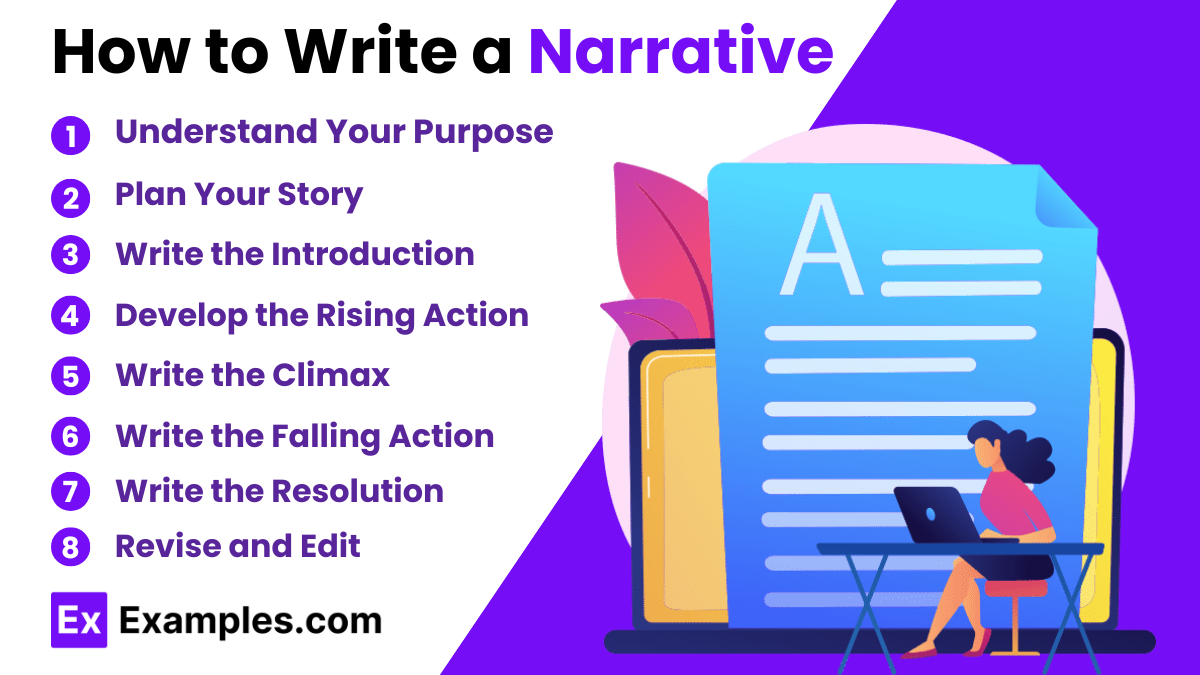
Writing a narrative involves telling a story in a way that engages your readers. Here are the steps to help you craft a compelling and well-structured narrative:
Step 1: Understand Your Purpose
Determine the main purpose of your narrative. Are you aiming to entertain, inform, or convey a personal experience? Knowing your purpose will guide the tone and style of your writing.
Step 2: Plan Your Story
- Choose a Topic: Select a topic that interests you and is relevant to your audience. It could be a personal experience, a fictional story, or an anecdote.
- Outline Your Story: Create an outline to organize your thoughts and ensure a logical flow of events. Include the following elements:
- Introduction: Set the scene and introduce the characters.
- Rising Action: Develop the main conflict with a series of events.
- Climax: Present the turning point or the most intense moment of the story.
- Falling Action: Show the aftermath of the climax.
- Resolution: Resolve the conflict and provide closure.
Step 3: Write the Introduction
- Start with a Hook: Begin with an engaging sentence that captures the reader’s attention. This could be a surprising fact, a question, or a vivid description.
- Set the Scene: Provide background information that helps the reader understand the context of the story. Introduce the main characters and the setting.
- State the Purpose: Hint at the main conflict or the central theme of your story.
Step 4: Develop the Rising Action
- Build Tension: Introduce the main conflict and create a series of events that build suspense and tension. Each event should lead to the next, escalating the conflict.
- Develop Characters: Show the characters’ personalities, motivations, and growth through their actions, dialogue, and interactions with others.
Step 5: Write the Climax
- Create a Turning Point: Present the most intense and crucial moment of the story. This is where the main conflict reaches its peak, and the protagonist faces a significant challenge or decision.
Step 6: Write the Falling Action
- Show Consequences: Describe the events that follow the climax. Show how the characters deal with the aftermath and start to resolve the conflict.
- Begin Resolution: Start wrapping up the story by addressing any remaining issues or loose ends.
Step 7: Write the Resolution
- Provide Closure: Resolve the main conflict and provide a satisfying conclusion to the story. Show how the characters have changed or what they have learned.
- End with a Final Thought: Leave the reader with a concluding thought or reflection that ties back to the main theme or purpose of the narrative.
Step 8: Revise and Edit
- Review Structure: Ensure your narrative has a clear beginning, middle, and end. Check that the events flow logically and that the conflict is effectively developed and resolved.
- Enhance Language: Use descriptive language to create vivid images and engage the reader’s senses. Avoid unnecessary details that do not contribute to the story.
- Proofread: Check for grammar, punctuation, and spelling errors. Make sure your writing is clear and concise.
How do I start a narrative?
Begin with a hook to grab the reader’s attention. Introduce the setting, characters, and the main conflict or theme in the opening paragraph.
What is the structure of a narrative?
A narrative typically includes an introduction, rising action, climax, falling action, and resolution. This structure helps create a coherent and engaging story.
How can I make my characters believable?
Develop characters with distinct personalities, motivations, and flaws. Show their growth and changes throughout the story through actions, dialogue, and inner thoughts.
What are common themes in narrative writing?
Common themes include love, friendship, betrayal, courage, and personal growth. Choose a theme that resonates with your audience and adds depth to your story.
How do I create suspense in my narrative?
Build suspense by gradually revealing information, using cliffhangers, and developing complex conflicts. Keep readers guessing about what will happen next.
What point of view should I use?
Common points of view are first-person, where the narrator is a character in the story, and third-person, where the narrator is outside the story. Choose based on the story’s needs.
How important is dialogue in a narrative?
Dialogue is crucial as it reveals character traits, advances the plot, and adds realism to the story. Make sure it sounds natural and serves a purpose.
How can I improve my narrative’s pacing?
Vary sentence lengths, use action verbs, and balance detailed descriptions with plot progression. Avoid long, unnecessary scenes that slow down the story.
Can I mix genres in my narrative?
Yes, mixing genres like romance and mystery can add interest and depth to your story. Ensure the blend feels natural and serves the overall narrative.
How do I write a strong ending?
Resolve the main conflict and provide closure for the characters. Aim for an ending that feels satisfying and consistent with the story’s themes and tone.



